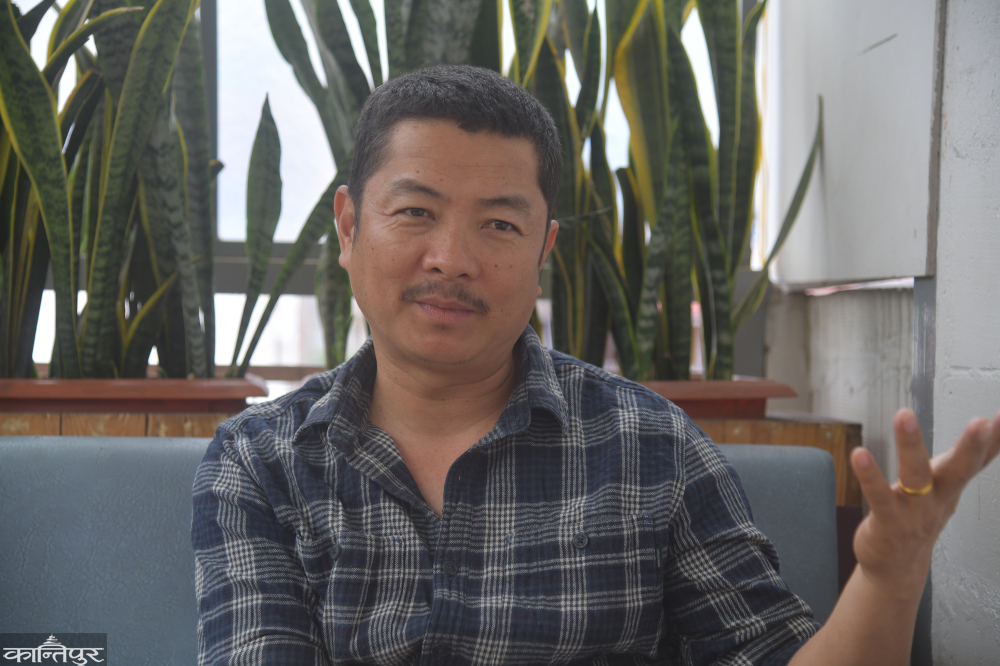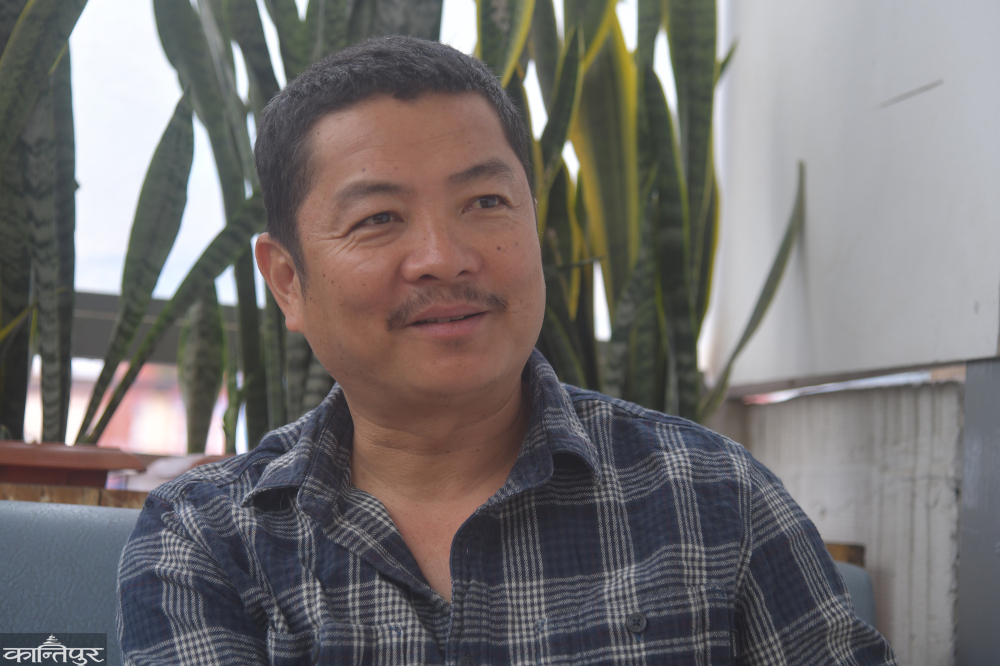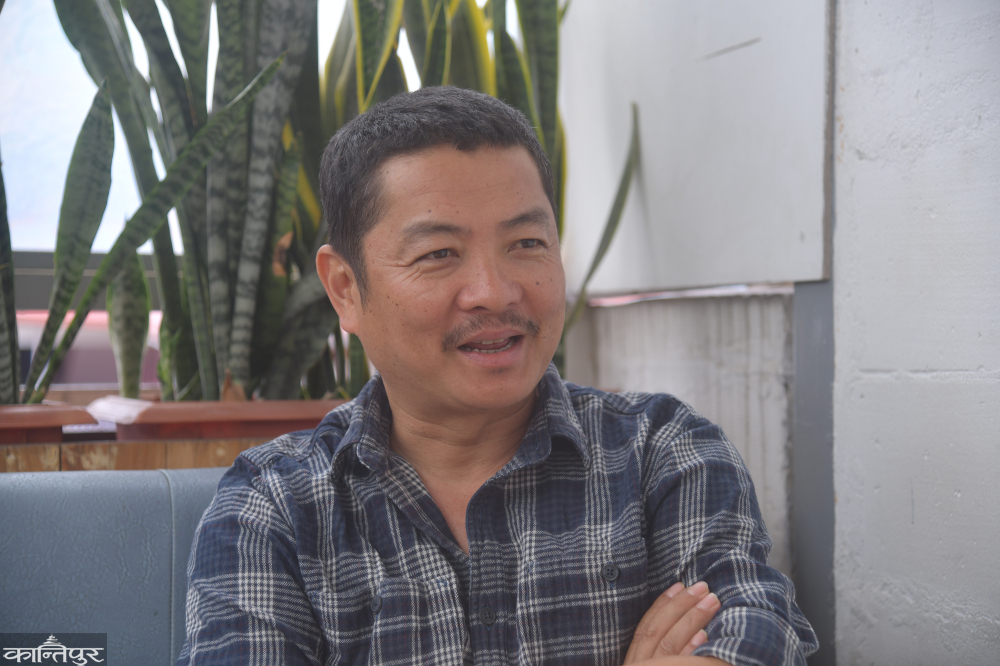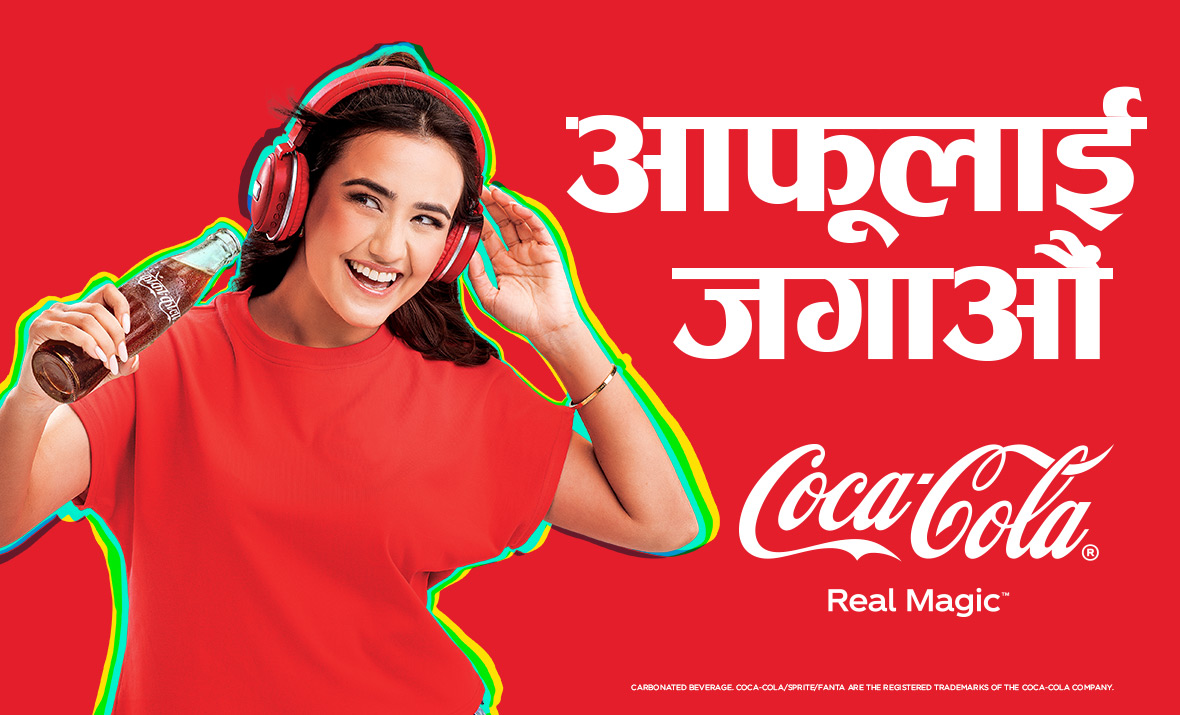The only claimant is Dayahang
We use Google Cloud Translation Services. Google requires we provide the following disclaimer relating to use of this service:
This service may contain translations powered by Google. Google disclaims all warranties related to the translations, expressed or implied, including any warranties of accuracy, reliability, and any implied warranties of merchantability, fitness for a particular purpose, and noninfringement.


When it comes to Nepali films, the year 2080 was a year of grace. The previous New Year started with Daya starrer 'Bihepas'. Daya's next film, 'Jari', was released in May. Another film was released in May, 'Neerfool', and in August, 'Nago Village' was released. In Kattik, 'Dimag Bada', in Magha, 'Dayarani', in February, 'Rangeli' and in Chait, 'Degree Maila: M.A. Third Class'.



9 films in one year, 2080 was dominated by Daya. Like the previous year, 2081 is sure to be the year of mercy! Dayahang starrer 'Mansara' is currently playing in the theatres. The performance date has been decided, 'Gaon Ina Bato' is heating up the hall on May 25. Dayahang claims that the film, which is preparing to be shown in the domestic market after traveling to many festivals, is the best of his career. The date of June 28 is waiting, 'Gharzwaiin'.
After all, why is Dayahang preferred by the film industry? Film critic Anup Subedi believes that issues of inclusivity and identity have made Dayahang such a place in the film industry. As society began to accept him, so did the market. After becoming a hit, the market started following him. In our society, the issue of inclusiveness was raised, a debate was started that everyone should have a place. That is one of the reasons why Dayahang got the place. On the other hand, due to the issue of identity, a kind of community considered Dayahang to be close to them," says Subedi, "Rather than the choice of the filmmakers, Dayahang is being repeated in the film due to the acceptance of the society."
 artist Dayahang Rai . Photos : Deepak KC/Kantipur
artist Dayahang Rai . Photos : Deepak KC/Kantipur
has been seen continuously in films, and recently a commentary has been created, 'Dayahang Deraherda Wakk'! Now the reaction of Daya to take a 'break' from the film is old. Dayahang, who is unable to take a 'break' even if he wants to, has his own obligations. He is currently filming with Dayahang Jo, the Dauntris they have been associated with for a long time. He didn't even ask me to do a friend's film from that time, I won't give it to him. That's why he kept repeating - in films like Rambabu Gurung, Upendra Subba, Dipendra Lama and others. Even when
director Naveen Subba was running the 'Indigenous Film Archive', Bollywood's interference in Nepali films was increasing. Subba used to raise his voice on the narration style of Nepali films. Every community has its own style of telling stories. Subba used to emphasize that to change the face of Nepali films, it is necessary to find the style of reading stories within the values of different communities. After Numafung, Rambabu, Upendra, Mawtse, Dipendra followed Subba to tell their stories. They started bringing the story of their community to film. The story of the Thakali society, the story of the Gurung community. Sometimes the story of Tamang and sometimes Rai community. Dayahang sometimes becomes a lemon and sometimes a crocodile. In the story of this community, his face got mixed up, and he kept repeating.
'Dipendra, Upendra came to film writing some from journalism and some from literature. Whoever wrote the story also wrote the story of their own environment. They kept filming, I kept getting movies. That's why I became more visible," says Dayahang, "I did justice to those different characters or not. However, I got a chance to understand the values and philosophy of life of that community and culture. Basically, I got to understand Nepali society. As I seized that opportunity, I saw more in the market. However, that does not mean that it has happened too much. As the
 reviewer Subedi said, after it became a hit in the market, those who chose Dayahang also started to increase in terms of risk. 9 films released in 2080 is the result of this. Dayahang is aware that the society has not accepted his face easily. While politics is carrying the issue of identity, towards the film sector, Naveen Subbas started a debate for the acceptance of the stories and faces of different communities through the 'Tribal Tribes Film Festival'. Upendra Subba, Rajan Mukarung started to write poems about belonging in poetry. Gradually, the awareness of the society expanded.
reviewer Subedi said, after it became a hit in the market, those who chose Dayahang also started to increase in terms of risk. 9 films released in 2080 is the result of this. Dayahang is aware that the society has not accepted his face easily. While politics is carrying the issue of identity, towards the film sector, Naveen Subbas started a debate for the acceptance of the stories and faces of different communities through the 'Tribal Tribes Film Festival'. Upendra Subba, Rajan Mukarung started to write poems about belonging in poetry. Gradually, the awareness of the society expanded.
And Daya felt, 'The story is ours too, I can be the character who tells that story.' There was no immediate change in the consciousness of the film industry. Even while doing 'Kabaddi', whenever a certain face was seen, it was tagged as a tribal film. Bringing the film to the market was a big challenge. However, Dayahang has experienced that these films are gradually gaining the status of Nepali. The story may be about the tribal community, but now it has started to be seen that these films are Nepali. Now this is a Gurung character, even the story of the Limbu community has started to be seen as a Nepali film," said Dayahang. Even a decade ago, the film industry carried the beauty standards on its shoulders. However, when Dayahang played 'Dasdhunga' in the play, then he also became more confident to appear on screen. "When I was a slave, I had the courage to say that now I will get at least one film a year," he says.
Dayahang doesn't want to miss his favorite script every year. It includes, 'Village Ina Bato', 'Rajaganj'. He plans to work with one debut director a year. The number of Dauntri/Saathibhai films is increasing. He did not increase the number of films so that they will earn money when they run. I don't think that tomorrow will be Damadol, I have to earn it today. How can the work done today be done well,' he says, 'Who sits thinking about tomorrow?' Regarding
debut director, Dayahang says that he has also worked to give them a place. "Debut directors have new zeal, there is speculation that they will make films without professionalism," he says. With that greed, he wants to connect with the new director. Their working technique is new. They come to make films for the purpose of telling stories with selfless thoughts. So I am tempted to learn new things with new zeal. But after making the second film, the market has already taken them away,'' is his experience. Dayahang, who has been associated with Rambabu, Dipendra, Nigam Shrestha, Nischal Basnet, Upendra Subba, Deepak Rauniar says, 'It is the new director who believed in me. Apart from Naveen Subba, I have reached this point.' Dayahang suggests looking at the market commentary from a different perspective. Although the face looks the same, he is seen portraying different characters in different films. He is of the opinion that as the film carries different values, one should forget his face while watching the film and pay attention to the issue raised by it. Forget about my face appearing in the posters and trailers and look at the issues raised by the film in an unbiased way. Then you find a lot of things that are associated with the film,' said Daya. In the
 'Mansara', Daya appeared on screen for a short time in the character of Manhang. He was seen as a character who left Soltini and went abroad in search of Soltini. The film tried to show the pain and courage of a single mother along with the pain of a childless couple. It has been tried to raise the issue of how those who have a degree in 'Degree Maila' became academically unemployed, the effect of unemployment on the youth. Similarly, in 'Rangeli', he was seen in the character of standing up against oppression and moving forward to gain power. He is seen in a different character in 'Gaon Inga Bato' which is being prepared for performance. Film is the director's medium, the story progresses according to the director's point of view. Working with contemporary filmmakers leaves me free to control the character. But, in this film, the director used to control the character as he wanted,' he shares his experience of working with director Subba.
'Mansara', Daya appeared on screen for a short time in the character of Manhang. He was seen as a character who left Soltini and went abroad in search of Soltini. The film tried to show the pain and courage of a single mother along with the pain of a childless couple. It has been tried to raise the issue of how those who have a degree in 'Degree Maila' became academically unemployed, the effect of unemployment on the youth. Similarly, in 'Rangeli', he was seen in the character of standing up against oppression and moving forward to gain power. He is seen in a different character in 'Gaon Inga Bato' which is being prepared for performance. Film is the director's medium, the story progresses according to the director's point of view. Working with contemporary filmmakers leaves me free to control the character. But, in this film, the director used to control the character as he wanted,' he shares his experience of working with director Subba.
At a glance, Dayahang is not terribly new when it becomes a "mile" in "Gaon Ina Bato". The style adopted by Daya in the character creation will look somewhat different in Myla's character. In this film, he has broken many of the styles that he has been repeating in the old films. For example, in a scene Daya has to perform an action (action). When the camera is filming, when the action is not completed in time, Daya sometimes arranges the body clothes to cover it, and sometimes what he does. The production team had assigned a study team on Daya's old films when he was walking and talking. Daya has acted in the character of 'Myla' by removing those old weaknesses. audience will not see these weaknesses of
characterization in the film, but by learning these aspects as opportunities, Dayahang became 'Myla'. Myla says that the character's profession helped Daya a lot in creating the character. In some previous films, Dayahang did not know what the role of the character was. However, it was written in the script that this character will do Choya's job. After Dayahang drew Choya in real form, the rhythm of the character was caught. Daya's lips moved involuntarily to protect the bamboo while picking the choya. Put it into character building. By the third day of filming, Mila Banda used her lips in the same way. Since the fourth day, he felt that he was repeating the 'gesture' just to show off, so he left it. On the fourth day of filming, director Subba concluded, "You should not leave that gesture."
Even when this character walks, Dayahang claims that he tries to walk in the same rhythm as the Choya. The production team had given her a pair of slippers, which had a part that stepped in the opposite direction than Daya's feet. It did not allow him to walk easily, again a person who picks choya is a careful walker. I thought I would walk slowly. However, thinking like that and acting becomes mechanical. But when props gave me that kind of sandal, I couldn't walk in it. This is how I came to create the character," says Daya, "It is not that all these aspects look terrible in the film. However, the production of the film has been done in such a poor manner.'
 Dayahang creates a character based on the facts of the script. They try to create a character within the facts mentioned in the script. After reading the script 20/22 times, he builds the character by grasping the facts within it. The first step in creating a character is to find out the background of each character. Then they create the character by understanding the character's beliefs, social values and his purpose. When he became a 'gangster' in 'Rangeli', he showed a lot of introversion. The character has no original purpose, follows the ideas created by others, Vijay. So Dayahang worked towards building that character as a character who doesn't speak much. To become the Milea of 'Degree Milea', he set his eyes on Nepali politics. He created this character by looking at the tendency to keep raising his voice for his own existence but denying the existence of others. Whatever the
Dayahang creates a character based on the facts of the script. They try to create a character within the facts mentioned in the script. After reading the script 20/22 times, he builds the character by grasping the facts within it. The first step in creating a character is to find out the background of each character. Then they create the character by understanding the character's beliefs, social values and his purpose. When he became a 'gangster' in 'Rangeli', he showed a lot of introversion. The character has no original purpose, follows the ideas created by others, Vijay. So Dayahang worked towards building that character as a character who doesn't speak much. To become the Milea of 'Degree Milea', he set his eyes on Nepali politics. He created this character by looking at the tendency to keep raising his voice for his own existence but denying the existence of others. Whatever the
film, Dayahang is the only contender for the original character in the stories of tribal and tribal communities in recent times. Dayahang, who has worked on director Naveen Subba's 'Gaon Inya Bato', which has been raising the issue of identity in the film industry, claims that there is a new practice in reading stories recently. Some are telling the story by holding the layers of the geographical situation, some are telling the story by holding the social values. "Some people are telling the society from the point of view of the characters," says Dayahang, "If you look at these films with a Bollywood stamp, you are practicing reciting the story beautifully. Not only the tribal people, but the entire filmmakers are trying to tell the stories of their communities, which is sure to take the film industry to a new direction.



 २८.१२°C काठमाडौं
२८.१२°C काठमाडौं























